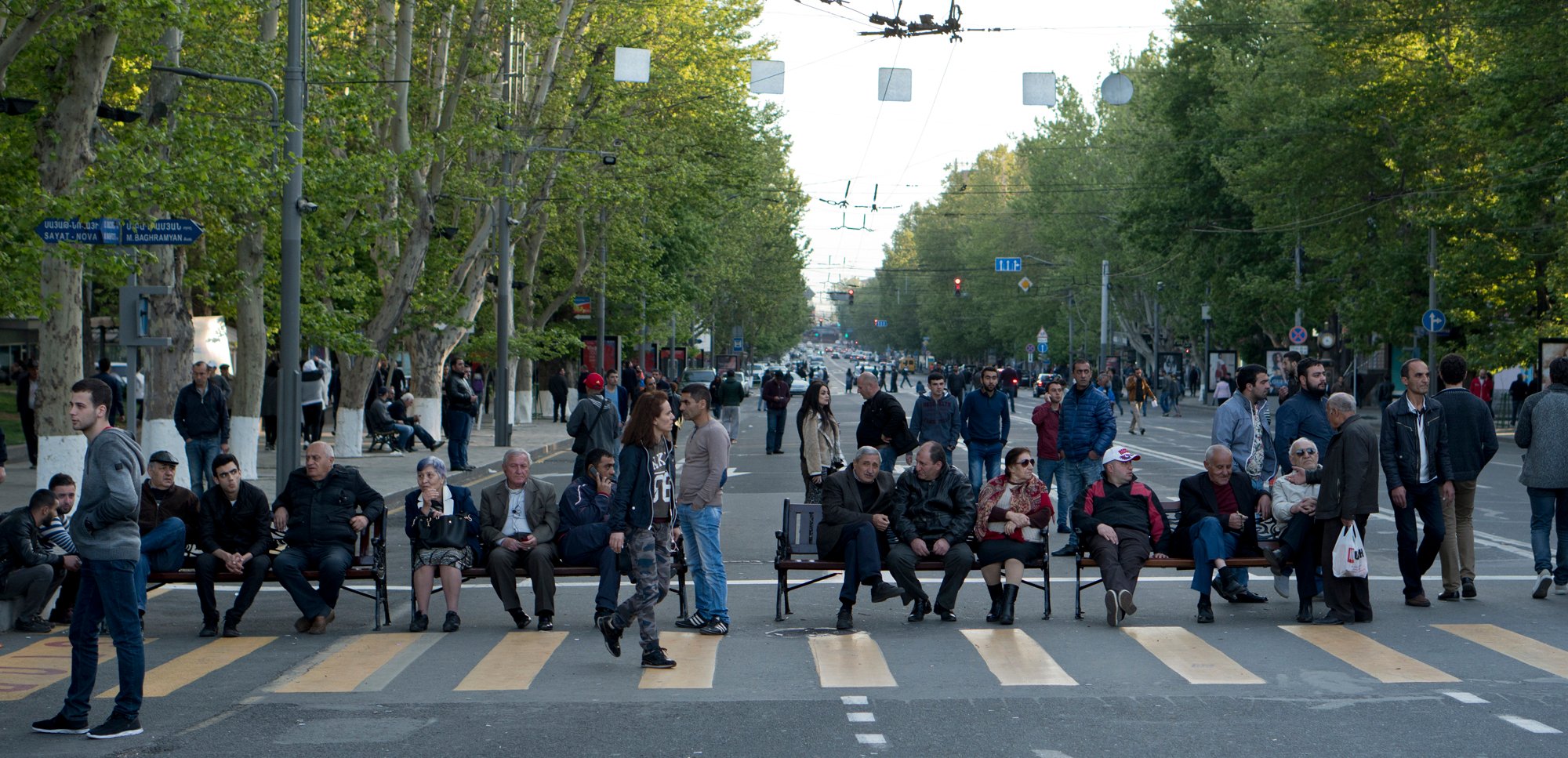The My Step movement, which, ultimately, led to a revolution, has skillfully merged the distances between the virtual and reality. It did not contradict and put the virtual person at odds with the physical one, rather it merged the two living models, which contradicted each other just a few years ago.
Being physically present on the scene meant being simultaneously online, because any initiative or step was documented and posted online in real time. If they took a step, then they did it with a smartphone in hand, simultaneously depicting and describing what was happening.
And that fact that the scene or the place where people were collecting was not just one, but many across the entire state, allowed for My Step to be considered a movement which acted according to the logic of social networks.
Social networks offered quickly scrollable news-depictions.
You can scroll through news and pictures, without going too deep, and decide for yourself as to where to stand, interpret, answer, ask or be silent with indifference.
The Armenian Velvet (or Open Hands) Revolution used the characteristics of social networks’ in swiftly scrolling through and hastily reading about the events.
Leaders of the movement countered vertical control with horizontal communication. Personal actions and the dissemination of communication, which was based on not one major thing but with small steps, was demanded in the news feeds of those present. And being constantly present stubbornly and with pleasure.
People who were blocking the streets, marching in different parts of the city, beeping in their cars (in a word, showing that they were not obedient) unintentionally appeared in social media, but at this point, not virtually.
It turns out that if you were on the street (even when beeping in your car, clapping or whistling) then you were a participant (commenter) or a sympathizer (liker).
It wasn’t even necessary for you to start your own initiative, sympathy and solidarity can be expressed quickly by joining any process and then quickly moving to a different area and being a participant of a different step. Or at least a witness.
After all, most start their day by entering Facebook (to see what’s up). The same is being done now. People go out onto the streets (bringing Facebook with them, along with Instagram and YouTube), in order to see what’s up.
When necessary, they would strengthen the happenings more (by standing next to the protesters), and if so desired fill the gap (by starting their own protest).
Speed was a decisive factor.
There were no dead ends or barriers, if they saw that police officers were protecting/closing a street, people would move, moving the protests with them.
It isn’t a coincidence that until Serzh Sargsyan’s resignation, the relations between protesters/activists and power structures were reminiscent of a game of “tag,” where the decided winner was whoever moved faster.
In the same way that it is difficult to predict what post in social media will spark a hot debate, it was difficult to predict which street protest would give a worthwhile reaction.
It was clear that the authorities were absolutely unprepared for similar modes of interactivity with their hierarchic and out of touch with reality proposals. For example, with difficult to move media, brutal misinformation, harsh profocations and errors from the political elite.
The principles of social networks’ rapid response and immediate decision making easily overthrew the attempts of authorities to push back, which was based on orders from superiors and lower echelons, then the orders of those in the lower echelons to even lower echelons.
That is, pyramidal management simply didn’t manage to keep up with following and countering, splitting several parts at once. And society was not only more advanced than its leaders, but were also simply faster, more mobile and creative.
We can say that in Armenia, the provinces also embodied the external personification of social networks which decentralized the movement. And that is perhaps a unique achievement.
Nune Hakhverdyan







